محمد علي باشا
Mohammed Ali Pasha
portrait in oils by Auguste Couder
Muhammad Ali Pasha al-Mas'ud ibn Agha - (Mehmet Ali Pasha in Albanian; Kavalalı Mehmet Ali Paşa in Turkish) - (4 March 1769 – 2 August 1849) was an Ottoman Turk, of Albanian origin, who became an Ottoman Wāli, and self-declared Khedive of Egypt and Sudan.Though not a modern nationalist, he is regarded as the founder of modern Egypt because of the dramatic reforms in the military, economic and cultural spheres that he instituted.He also ruled Levantine territories outside Egypt.The dynasty that he established would rule Egypt and Sudan until the Egyptian Revolution of 1952.Muhammad Ali was born in Kavala, in the Ottoman province of Macedonia (now a part of modern Greece) to Albanian parents.According to the many French, English and other western journalists who interviewed him, and according to people who knew him, the only language he knew fluently was Albanian. He was also competent in Turkish.The son of a tobacco and shipping merchant named Ibrahim Agha, his mother Zainab Agha was his uncle Husain Agha's daughter. Muhammad Ali was the nephew of the "Ayan of Kavalla" (Çorbaci) Husain Agha.When his father died at a young age, Muhammad was taken and raised by his uncle with his cousins.As a reward for Muhammad Ali's hard work, his uncle Çorbaci gave him the rank of "Bolukbashi" for the collection of taxes in the town of Kavala.After his promising success in collecting taxes, he gained Second Commander rank under his cousin Sarechesme Halil Agha in the Kavala Volunteer Contingent that was sent to re-occupy Egypt following Napoleon's withdrawal.He married Ali Agha's daughter, Emine Nosratli, a wealthy widow of Ali Bey.In 1801, his unit was sent, as part of a larger Ottoman force, to re-occupy Egypt following a brief French occupation. The expedition landed at Aboukir in the spring of 1801.The French withdrawal left a power vacuum in the Ottoman province. Mamluk power had been weakened, but not destroyed, and Ottoman forces clashed with the Mamluks for power.During this period of anarchy Muhammad Ali used his loyal Albanian troops to play both sides, gaining power and prestige for himself.As the conflict drew on, the local populace grew weary of the power struggle.Led by the ulema, a group of prominent Egyptians demanded that the Wāli (governor), Ahmad Khurshid Pasha, step down and Muhammad Ali be installed as the new Wāli in 1805.The Ottoman Sultan, Selim III, was not in a position to oppose Muhammad Ali’s ascension, thereby allowing Muhammad Ali to set about consolidating his position. During the infighting between the Ottomans and Mamluks between 1801 and 1805, Muhammad Ali had carefully acted to gain the support of the general public.By appearing as the champion of the people Muhammad Ali was able to forestall popular opposition until he had consolidated power.The Mamluks still posed the greatest threat to Muhammad Ali.They had controlled Egypt for more than 600 years, and over that time they had extended their rule extensively throughout Egypt.Muhammad Ali’s approach was to eliminate the Mamluk leadership, then move against the rank and file.In 1811, Muhammad Ali invited the Mamluk leaders to a celebration held at the Cairo Citadel in honor of his son, Tusun, who was being appointed to lead a military expedition into Arabia. When the Mamluks arrived, they were trapped and killed.After the leaders were killed, Muhammad Ali dispatched his army throughout Egypt to rout the remainder of the Mamluk forces.Muhammad Ali transformed Egypt into a regional power which he saw as the natural successor to the decaying Ottoman Empire. He summed up his vision for Egypt as follows:"I am well aware that the (Ottoman) Empire is heading by the day toward destruction...On her ruins I will build a vast kingdom... up to the Euphrates and the Tigris."
The Order of Muhammad ‘Ali : founded by Sultan Husain Kamil on 14th April 1915.
Awarded in a supreme class (Grand Cordon with Collar), two ordinary classes (1. Grand Cordon and 2. Commander) and two medals (gold and silver).
The supreme class being restricted to Heads of State and members of the Egyptian and foreign Royal houses.
The Grand Cordon was restricted to fifteen recipients at any one time.
They enjoyed the title of Pasha with the style of His Excellency (Hazrat Sahib al-Ma’ali), and were entitled to military salutes when wearing their insignia.
The medals were awarded for acts of military gallantry, regardless of rank. Obsolete 1954.
Order of Mohammed Ali – (Nishan al-Muhammad ‘Ali)
Courtyard of the Muhammad Ali Mosque - Cairo
مسجد محمد علي
Interior of the Mohammed Ali Mosque
Interior of the Mohammed Ali Mosque
(The Citadel – Cairo – Egypt)
The Mohammed Ali Mosque
(The Citadel – Cairo – Egypt)
مسجد محمد علي
مسجد محمد علي
Arms of the Sultan of Egypt
© Copyright Peter Crawford 2013
© Copyright Peter Crawford 2013
Prince Toussoun - Son of Muhammad Ali - as a Boy
إبراهيم باشا
Kavalalı İbrahim Paşa
Ibrahim Pasha - from a miniture painted in Paris
Kavalalı İbrahim Paşa
Ibrahim Pasha - from a miniture painted in Paris
Muhammad Said Pascha - (1822–1863)
سعيد باشا
Photo by Nadar
Sa'id of Egypt (1822–1863) was the Wāli of Egypt and Sudan from 1854 until 1863, officially owing fealty to the Ottoman Sultan but in practice exercising virtual independence. He was the fourth son of Muhammad Ali Pasha. Sa'id was a Francophone, educated in Paris. Under Sa'id's rule there were several law, land and tax reforms. Some modernization of Egyptian and Sudanese infrastructure also occurred using western loans. In 1854 the first act of concession of land for the Suez Canal was granted, to a French businessman Ferdinand de Lesseps. The British opposed a Frenchman building the canal and persuaded the Ottoman Empire to deny its permission for two years. Sudan had been conquered by his father in 1821 and incorporated into his Egyptian realm, mainly in order to seize slaves for his army. Slave raids (the annual 'razzia') also ventured beyond Sudan into Kordofan and Ethiopia. Facing European pressure to abolish official Egyptian slave raids in the Sudan, Sa'id issued a decree banning raids. Freelance slave traders ignored his decree. Under Sa'id's rule the influence of sheikhs was curbed and many Bedouin reverted to nomadic raiding. In 1854 he established the Bank of Egypt. Sa'id died in January 1863 and was succeeded by his nephew Ismail.إسماعيل باشا
Khedive Ismail Pasha
Crown of the Khedive of Egypt
© Copyright Peter Crawford 2013
© Copyright Peter Crawford 2013
إسماعيل باشا
İsmail Paşa
Khedive Ismail Pasha
Khedive Ismail Pasha - in old age - after he was deposed
İsmail Paşa
إسماعيل باشا
Tomb of Khedive Ismail Pasha
İsmail Paşa
إسماعيل باشا
HH Khedive Muhammed Tewfik Pasha - (1852-1892)
محمد توفيق باشا
HH Muhammed Tewfik Pasha (Tawfiq of Egypt) (30 April or 15 November 1852 – 7 January 1892) was Khedive of Egypt and Sudan between 1879 and 1892, and the sixth ruler from the Muhammad Ali Dynasty. In private life he was courteous and amiable. He had no desire to keep up the unapproachable state of an oriental ruler. Indeed, in many ways his manners and habits were less oriental than European. He married in 1873 his kinswoman, Amina Hanem, with whom he lived very happily. She was his only wife and Tewfik was a strong advocate of monogamy. He died on 7 January 1892, at the Helwan Palace near Cairo, and was succeeded by his eldest son, Abbas II.
HH Khedive Abbas Helmi II
عباس حلمي الثاني
HH Abbas II Hilmi Bey (also known as Abbas Hilmi Pasha) (14 July 1874 – 19 December 1944) was the last Khedive of Egypt and Sudan (8 January 1892 – 19 December 1914). The establishment of a sound system of native justice, the great remission of taxation, the reconquest of Sudan, the inauguration of the substantial irrigation works at Aswan, and the increase of cheap, sound education, each received his formal approval. He displayed more interest in agriculturethan in statecraft. His farm of cattle and horses at Qubbah, near Cairo, was a model for scientific agriculture in Egypt, and he created a similar establishment at Muntazah, near Alexandria. He married the Princess Ikbal Hanem and had several children. His relations with Sir Eldon Gorst, were excellent, and they co-operated in appointing the cabinets headed by Butrus Ghali in 1908 and Muhammad Sa'id in 1910 and in checking the power of the Nationalist Party. The appointment of Kitchener to succeed Gorst in 1911 displeased Abbas, and relations between him and the British deteriorated. Kitchener often complained about "that wicked little Khedive" and wanted to depose him. When the Ottoman Empire joined the Central Powers in World War I, the United Kingdom declared Egypt an independent Sultanate under British protectorate on 18 December 1914 and deposed Abbas. Abbas supported the Ottomans in the war, including leading an attack on the Suez Canal. His uncles Hussein Kamel and then Fuad I, the British choices for their Protectorate, issued a series of restrictive orders to strip Abbas of property in Egypt and Sudan and forbade contributions to him. These also barred Abbas from entering Egyptian territory and stripped him of the right to sue in Egyptian courts. Abbas finally accepted the new order of things on 12 May 1931 and abdicated. He retired to Switzerland where he died at Geneva 19 December 1944.
Flag of the Sultanate of Egypt - 1882
© Copyright Peter Crawford 2013
© Copyright Peter Crawford 2013
Sa Hautesse Sultan Hussein Kamel
حسين كامل
Sultan Hussein Kamel (21 November 1853 – 9 October 1917) was the Sultan of Egypt from 19 December 1914 to 9 October 1917, during the British protectorate over Egypt. Hussein Kamel was the son of Khedive Isma'il Pasha, who ruled Egypt from 1863 to 1879. Hussein Kamel was granted the title of Sultan of Egypt by the British in 1914, after they had deposed his nephew, Khedive Abbas Hilmi II. The newly created Sultanate of Egypt was declared a Britishprotectorate. This brought to an end the legal fiction of Ottoman sovereignty over Egypt, which had been largely nominal since Muhammad Ali's seizure of power in 1805. Upon Hussein Kamel's death, his only son, Prince Kamal al-Din Husayn, declined the succession, and Hussein Kamel's brother Ahmed Fuad ascended the throne as Fuad I..
The Mahmal - Cairo - (1911)
The Mahmal - Cairo - (1911)
The Mah'mal, or litter, is a wooden erection in pyramidal form and is hung by embroidered fabrics, which are very beautiful.
These hangings, or coverings, accompany the litter and are intended for the most sacred sanctuary of the interior of the Mosque at Mecca . . . .The ceremony we witnessed was the one observed in honor of taking the coverings from the citadel to the Mosque of Huseyn.
Here the sacred fabrics remain for two or three weeks, where they are embroidered and packed ready to accompany the great caravan of pilgrims to Mecca.
The coverings for the sanctuary at Mecca are sent every year from Cairo by the representative of the Sultan of Turkey.
The Mah'mal having made the pilgrimage to Mecca often is not only a symbol of, royalty, but is also regarded as a sacred relic.
Even the sight of it in the esteem of devout Muslims brings a blessing.
At the head of the procession we see soldiers who are followed by camels, highly decorated, and bearing on their humps palm-branches, with oranges attached.
Each section of the procession is preceded by a band of music, the largest being that which accompanies the Mah'mal.
The cavalcade moves very slowly. The people cheer the "Prince of the Pilgrimage" as he goes by between two camels, one in front of the other.
He is to conduct the expedition when it finally starts from the Birket-el-Hagg to Mecca . . . .An unusual commotion is created as the Mah'mal or litter goes by. It is seen far down the street on the back of a camel, swinging right and left, and up and down, as the ship of the desert makes its way through the sea of excited and tumultuous humanity on every side.
Order of Ismail - (Nishan al-Ismail)
His Majesty Fouad I
(by the grace of God, Sultan & King of Egypt & the Sudan - Sovereign of Nubia, Kordofan, and Darfur)
فؤاد الأول
Fuad I (26 March 1868 – 28 April 1936) was the Sultan and later King of Egypt and Sudan, Sovereign of Nubia, Kordofan, and Darfur. The ninth ruler of Egypt and Sudan from the Muhammad Ali Dynasty, he became Sultan of Egypt and Sudan in 1917, succeeding his elder brother Sultan Hussein Kamel. He substituted the title of King for Sultan when the United Kingdom unilaterally granted Egypt nominal independence in 1922. His name is sometimes spelled Fouad. Prior to becoming sultan, Fuad had played a major role in the establishment of Cairo University. He became the university's first rector in 1908, and remained in the post until his resignation in 1913. In 1913, Fuad made unsuccessful attempts to secure for himself the throne of Albania, which had obtained its independence from the Ottoman Empire a year earlier. Fuad also served as President of the Egyptian Geographic Society from 1915 until 1918. Fuad ascended the throne of the Sultanate of Egypt upon the death of his brother Hussein Kamel in 1917. On 28 February 1922, the United Kingdom ended its protectorate over Egypt and granted it nominal independence, in the aftermath of the Egyptian revolution of 1919. As a result, Fuad issued a decree on 15 March 1922 whereby he changed his title from Sultan of Egypt to King of Egypt. In 1930, he attempted to strengthen the power of the Crown by abrogating the 1923 Constitution and replacing it with a new constitution that limited the role of parliament to advisory status only. Large scale public dissatisfaction compelled him to restore the earlier constitution in 1935. The 1923 Constitution granted Fuad vast powers. He made frequent use of his right to dissolve Parliament. During his reign, cabinets were dismissed at royal will, and parliaments never lasted for their full four-year term but were dissolved by decree. As a great-grandson of Muhammad Ali Pasha, Fuad was of Albanian descent. He married his first wife in Cairo, 30 May 1895 at the Abbasiya Palace in Cairo, 14 February 1896, H.H. Princess Shivakiar Khanum Effendi (1876–1947). Fuad married his second wife, Nazli Sabri (1894–1978), at the Bustan Palace, Cairo, 26 May 1919. The couple had five children, the futureFarouk I and four daughters, the Princesses Fawzia (who became Queen Consort of Iran), Faiza, Faika, and Fathiya. Fuad died at the Qubba Palace in Cairo and was buried at the Khedival Mausoleum in the ar-Rifai Mosque in Cairo.
The Royal Arms of the Kingdom of Egypt
© Copyright Peter Crawford 2013
© Copyright Peter Crawford 2013
Malik Fuad visits an Egyptian Village
King Fouad I of Egypt (center) at the Mahattet Masr Railway Station
(currently the Ramses Station) with King Albert I and Queen Elisabeth of Belgium
His Majesty Farouk I - (1920-1965)
(Fārūq al-Awwal)
by the grace of God, King of Egypt and Sudan, Sovereign of Nubia, of Kordofan, and of Darfur
فاروق الأول
Farouk I of Egypt (Fārūq al-Awwal) (11 February 1920 – 18 March 1965), was the tenth ruler from the Muhammad Ali Dynasty and the penultimate King of Egypt and Sudan, succeeding his father, Fuad I, in 1936. His full title was "His Majesty Farouk I, by the grace of God, King ofEgypt and Sudan, Sovereign of Nubia, of Kordofan, and of Darfur." He was overthrown in the Egyptian Revolution of 1952, and was forced to abdicate in favor of his infant son Ahmed Fuad, who succeeded him as King Fuad II. He died in exile in Italy. His sister was Princess Fawzia Fuad, first wife and Queen Consort of the Shah of Iran Mohammad Reza Pahlavi. The great-great-grandson of Muhammad Ali Pasha, Farouk was of Albanian descent as well as native Egyptian descent through his mother the Queen. Before his father's death, he was educated at the Royal Military Academy, Woolwich, England. Upon his coronation, the hugely popular 16-year-old King Farouk made a public radio address to the nation, the first time a sovereign of Egypt had ever spoken directly to his people in such a way:'And if it is God's will to lay on my shoulders at such an early age the responsibility of kingship,
I on my part appreciate the duties that will be mine, and I am prepared for all sacrifices in the cause of my duty...
My noble people, I am proud of you and your loyalty and am confident in the future as I am in God.
Let us work together. We shall succeed and be happy.
Long live the Motherland!'
His Majesty Farouk I - (1920-1965)
فاروق الأول
فاروق الأول
His Majesty Farouk I - (1920-1965)
فاروق الأول
فاروق الأول
at the Abdin Palace - Cairo - Egypt
His Majesty Farouk I - (1920-1965)
فاروق الأول
فاروق الأول
at reception in the Abdin Palace - Cairo - Egypt
in full dress naval uniform
His Majesty Farouk I - (1920-1965)
فاروق الأول
فاروق الأول
Princess Djananair Hanem Effendi
Princess Hadija - Daughter of the Younger Muhammad Ali
Khediva Emina - Wife of Khedive Tewfik
Emine Ibrahim Hanımsultan (Istanbul, 24 May 1858 – Bebek, Bosphorus, 19 June 1931), daughter of HE Damad Ibrahim Ilhami Pasha Beyefend
Princess Nimetallah
Princess Nimetallah being greeted by Palace Chamberlains
Princess Iffet Hassan
Princess Chivekiar
Princess Iffet Hassan in Pharonic Dress - 1911
الأميرة فوزية
Princess Fawzia - Cairo - 1940s
Her Royal Highness the Princess Fawzia of Egypt & the Sudan (born 5 November 1921) is an Egyptian princess who became Queen of Iran as the first wife of Mohammad Reza Pahlavi.
She is currently Fawzia Shirin, having remarried in 1949 and having lost her royal titles after the Egyptian Revolution of 1952, although she is referred to as princess out of courtesy. She is the most senior member of the deposed Muhammad Ali Dynasty residing in Egypt. Her nephew, Fuad, who was proclaimed King Fuad II of Egypt and Sudan after the Revolution, resides in Switzerland.
الأميرة فوزية
Princess Fawzia - Cairo - 1940s
The Call to Prayer - Abdin Palace - Cairo
Officers of the Royal Body-Guard
Abdeen - Cairo - Egypt 1940
Mounted Royal Body-Guard
Abdeen Palace - Cairo Egypt 1939
Mounted Royal Body-Guard
Abdeen Palace - Cairo Egypt 1939
Abdeen Palace - Cairo
Built on the debris of a house owned by the Turkish Prince Abdeen Bey, Abdeen Palace is considered one of the most sumptuous palaces in the world in terms of its adornments, paintings, and large number of clocks scattered in the parlors and wings, most of which are decorated with pure gold.
Built by Khedive Ismail, to become the official government headquarters instead of the Citadel of Cairo (which had been the centre of Egyptian government since the Middle Ages), this palace was used as well for official events and ceremonies.
Construction started in 1863 and continued for 10 years and the palace was officially inaugurated in 1874. Erected on an area of 24 feddans, the palace was designed by the French architect Rousseau along with a large number of Egyptian, Italian, French and Turkish decorators. However, the palace’s garden was added in 1921 by Sultan Fuad I on an area of 20 feddans.
The cost of building the palace reached 700,000 Egyptian pounds in addition to 2 million pounds for its furnishing. More money was also spent on the palace’s alteration, preservation and maintenance by consecutive rulers. The palace includes 500 rooms.
Throne Room of the Abdeen Palace - Cairo
The Nymphaeum - Shurba Palace - Cairo
Drawing Room in the Nymphaeum - Shurba Palace - Cairo
Muhammad Ali build himself a retreat palace or an official residence away from the Citadel in the district called Shubra al-kheyma.
Shubra lies north of Bulaq in the vicinity of the Muqqattam hills, south of Cairo, a spot on the bank of the Nile, which he found perfect for the construction of his official residence away from the seat of government. Another probable reason for that location was that Bulaq, at the time, was already undergoing many urban changes given the considerable efforts Muhammad Ali had put into developing a modern industrial infrastructure area.
Muhammad Ali's Harem - the Citadel - Cairo
قلعة محمد علي
قلعة محمد علي
The Citadel is sometimes referred to as Mohamed Ali Citadel, because it contains the Mosque of Muhammad Ali of (or Mohamed Ali Pasha), which was built between 1828 and 1848, perched on the summit of the citadel.
This Ottoman mosque was built in memory of Tusun Pasha, Muhammad Ali's oldest son, who died in 1816. However, it also represents Muhammad Ali's efforts to erase symbols of the Mamluk dynasty that he replaced.
This Ottoman mosque was built in memory of Tusun Pasha, Muhammad Ali's oldest son, who died in 1816. However, it also represents Muhammad Ali's efforts to erase symbols of the Mamluk dynasty that he replaced.
Quasr al-Nil Palace - Cairo
Khedive Ismail's Private Home - Cairo
His Majesty King Ahmed Fuad II
King of Egypt & the Sudan
فؤاد الثاني
His Majesty King Ahmed Fuad II
King of Egypt & the Sudan
فؤاد الثاني
“In the name of Allah the benevolent and the merciful.
We Ahmed Fouad II of Egypt, deeply saddened by the tragic events experienced by our beloved country, wish wholeheartedly for a swift solution to the present crisis.
“Our prayers accompany families who have suffered losses of dear ones.
“Our best wishes for a prompt recovery are extended to those who have been injured.
“We hope most sincerely that these unfortunate victims will be truly the last and that there will be no more bloodshed.
“Let us hope that the whole Nation and its people will recover peace and well being and take the path of democracy. Social and economic development can only come through peaceful dialogue.
“May Allah protect my beloved Egypt and the Egyptian people.”
Field Marshal Mohamed Hussein Tantawi
PLEASE NOTE : This blog is still under construction - check back for more developments
for more information about Egypt see:
http://www.scribd.com/doc/27406343/Thebes-of-the-1000-Gates
and
.http://www.scribd.com/doc/18746429/So-Long-Ago-So-Clear
___________________________________
for the art of Peter Crawford go to
 |
| © Copyright Peter Crawford 2013 |
http://greatartpetercrawford.blogspot.com/








































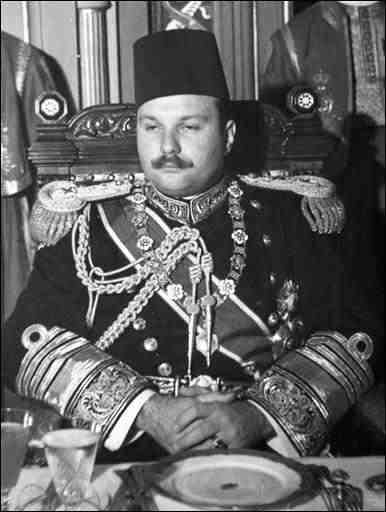
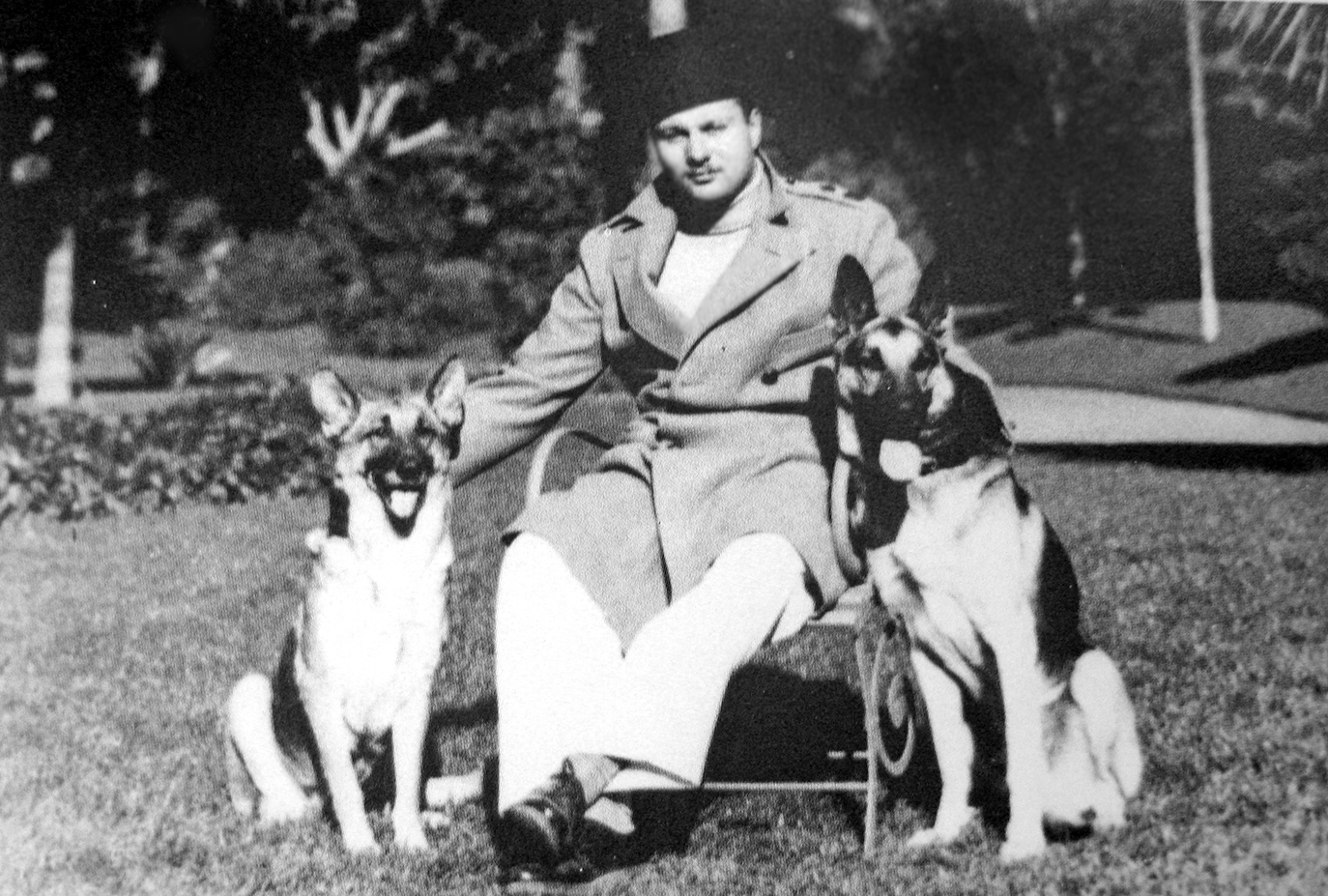
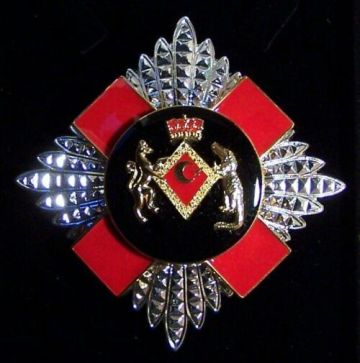









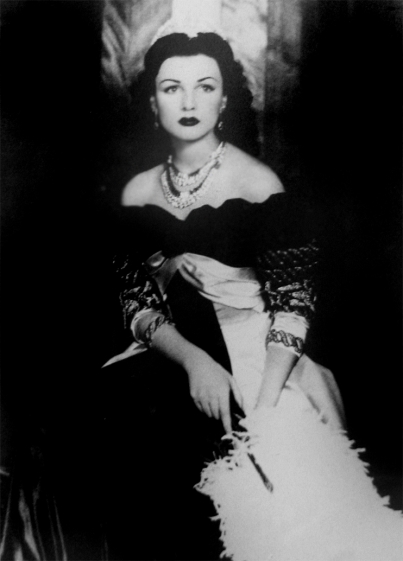
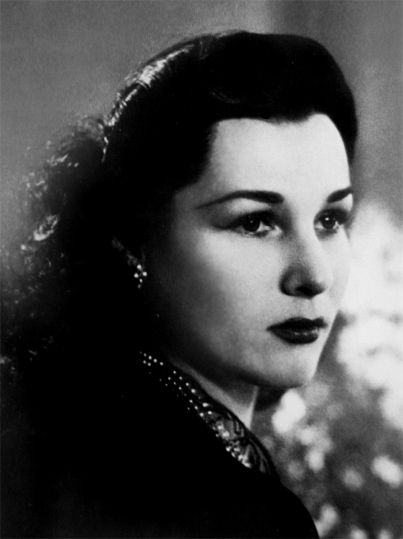



















No comments:
Post a Comment